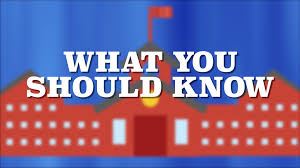What is Anaphylaxis?
Anaphylaxis is a severe life-threatening allergic reaction which affects more than one body part at the same time. The most common causes of anaphylactic reactions include foods, insect stings, latex & some medications. When you are allergic to some substance, the immune system overreacts with allergens & releases chemicals.
The mild symptoms of allergic reactions include watery eyes, a runny nose or skin problems with the rash. The second anaphylactic reaction is known as the biphasic reaction, which occurs after 12 hours of initial reaction.
Symptoms
Anaphylaxis symptoms start within few minutes soon after the contact with an allergen. Symptoms include:
1. Trouble in breathing & tightness of throat.
2. Swelling.
3. Cardiac arrest.
4. Low blood pressure rapid heartbeat.
5. Abdominal pain.
6. Nausea, vomiting, diarrhea.
7. Cardiac Arrest
Causes of Anaphylaxis
Some Common causes of Anaphylaxis include:
1. Certain medications, especially penicillin, anesthesia, aspirin medications.
2. Insect stings like bees, hornets, fire ants.
3. Food allergens include fish, cow’s milk, eggs, & some tree nuts.
4. Latex found in syringes, adhesive tapes, balloons & disposable gloves.
5. Allergies or Asthma.
6. Pollens such as grass & tree pollens.
The anaphylaxis diagnosis is based on the symptoms that occur after contact with an allergen that you are allergic to. The symptoms can be seen within 5 to 30 minutes.
1. The anaphylaxis diagnosis includes skin tests & blood tests.
2. You may be asked to provide the list of substances that you are allergic to.
3. Serum tryptase might help in diagnosing anaphylaxis.
4. Testing for food allergies.
What to do in an Emergency anaphylaxis
If you are with someone who is showing signs of anaphylaxis, act fast. And, even if you are not sure about symptoms of anaphylaxis, take the following steps immediately.
1. Call for emergency medical help.
2. Place the person in a better comfortable position.
3. Give medications to treat allergy attack, if they have them.
4. If the person is having trouble breathing never try to give anything by mouth.
5. Check person’s breathing & pulse. If the person is unconscious administer CPR.
Prevention of anaphylaxis
1. Always keep the emergency medical kit with medications that are prescribed by your doctor.
2. Alert your doctor about your drug allergies if any.
3. Avoid the allergen contact. Especially if you are allergic to insects, be cautious when they’re nearby.
4. If you are allergic to food items, try to avoid them & read the labels before eating such food items.
5. Avoid your allergic trigger.
Complications of anaphylaxis
1. Cardiac arrest.
2. Shock.
3. Airway Blockage.
4. No breathing or respiratory arrest.

